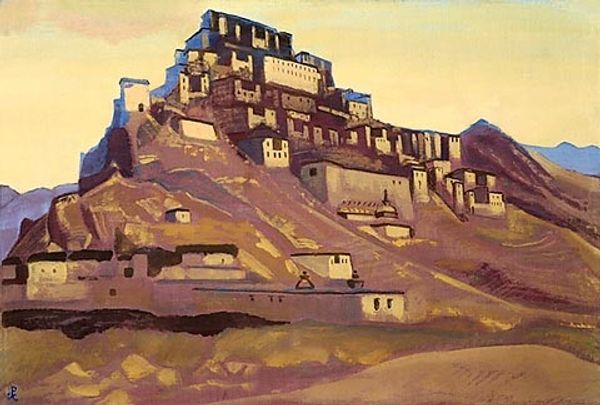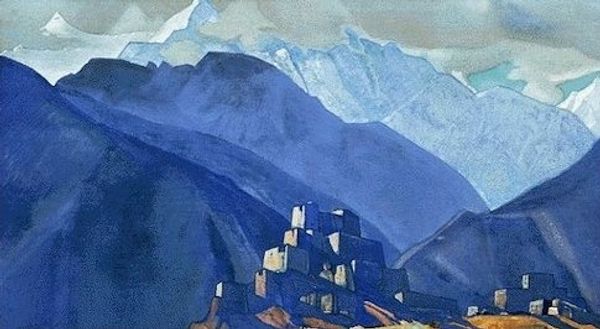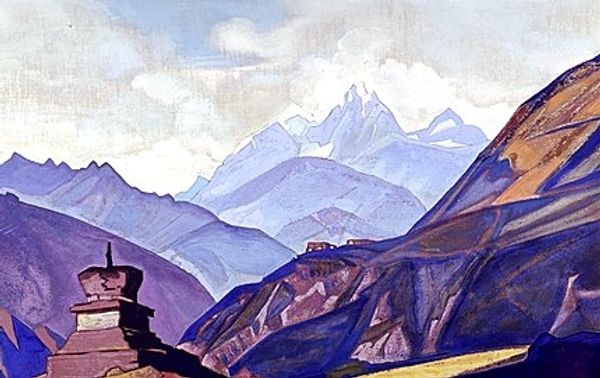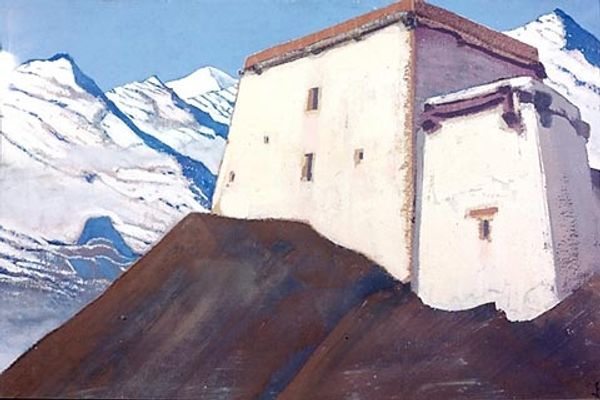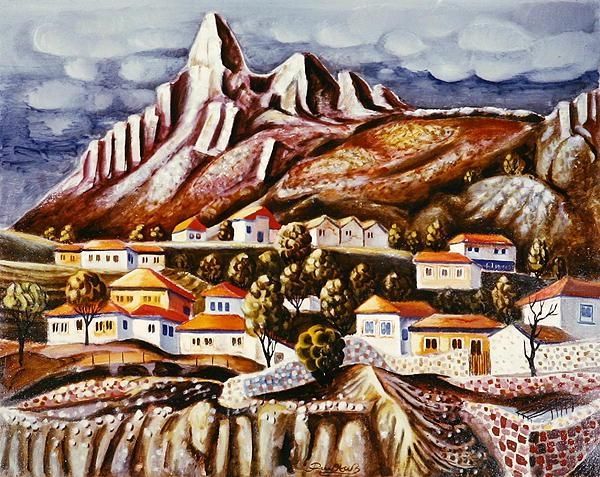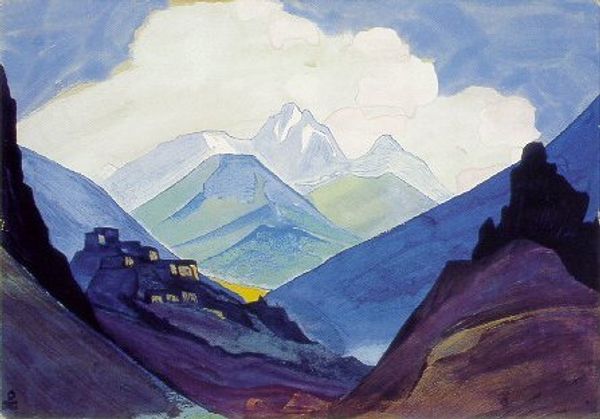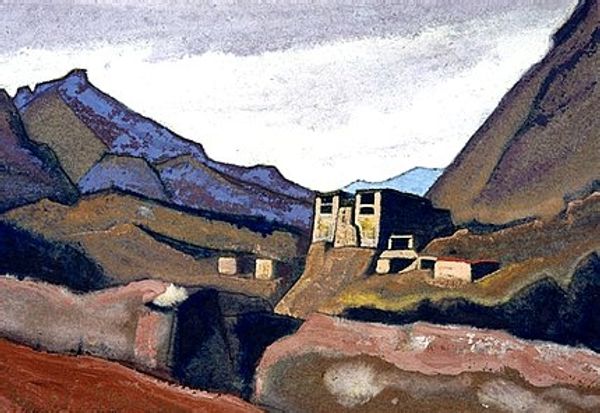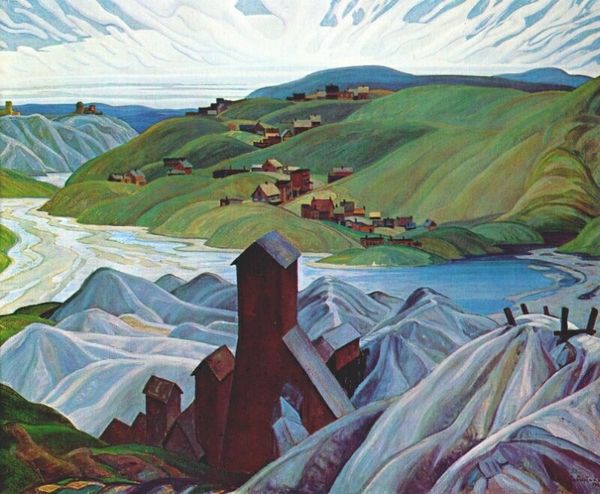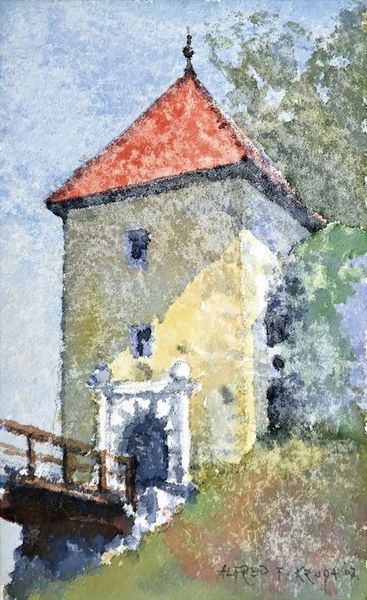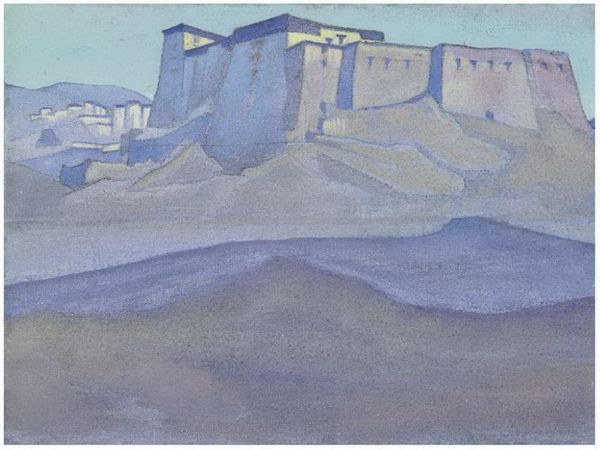
architecture
#
abstract painting
#
graffiti art
#
painted
#
possibly oil pastel
#
oil painting
#
acrylic on canvas
#
street graffiti
#
mountain
#
arch
#
paint stroke
#
painting painterly
#
painting art
#
architecture
Dimensions: 25.5 x 36 cm
Copyright: Public domain
Editor: Here we have Nicholas Roerich's "Gundlach. Residence of Thakur," painted in 1932. The architectural forms emerging from the mountainous landscape create this compelling contrast, like an almost otherworldly fortress rising into a crisp blue sky. How do you approach an artwork such as this? Curator: Its structural elements are certainly prominent. The composition pivots around the vertical thrust of the Thakur's residence, juxtaposed with the horizontal expanse of the mountains. Consider the triangulation throughout the work—mountains echoing the shape of the architecture. What does that structural echoing evoke? Editor: A sense of stability, perhaps? Like the building is part of the mountain itself. Curator: Precisely. Also, let us observe the paint application. Roerich uses visible brushstrokes. Notice how these aren't blended to create seamless illusion; rather, the texture of the paint itself becomes an expressive element, almost fracturing the image. Do you find that those fractured forms play with depth of field and the architecture's position in its locale? Editor: That makes sense. It flattens the perspective, pushing the background and foreground together. So the architectural element is made immediate, less set back. Curator: Indeed. By denying traditional illusionism, Roerich compels us to confront the materiality of the painting. What overall affect would you say this builds up, the color and brushwork used? Editor: It creates a fascinating tension between the tangible structure and the dreamy abstraction. Curator: Exactly. The painting resides within this duality, leaving much room for subjective reflection and analysis. Editor: I see what you mean; focusing on the formal components really highlights the push and pull of elements within this piece.
Comments
No comments
Be the first to comment and join the conversation on the ultimate creative platform.
